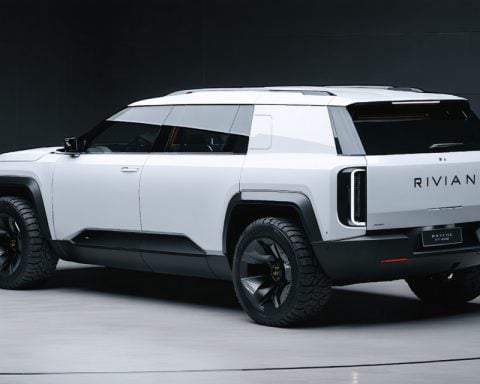- Cold weather can affect EV battery performance, but long-term degradation is less severe than feared.
- Survey results show older EVs (2017-2018) retain about 93% of their original battery capacity.
- Newer models (2019-2020) hold 96% capacity, and the latest (2021-2023) retain 97%.
- A typical EV still manages to travel 167 miles on a full charge after seven years, compared to an initial 180 miles.
- The average annual mileage for respondents is 6,001 miles, suggesting less usage may prolong battery life.
- EV batteries show gradual capacity loss, allowing owners to drive confidently over time.
Cold weather often chills more than the air; it can sap the life out of electric vehicle (EV) batteries. Despite this, a recent survey paints a surprisingly positive picture for EV owners worried about battery degradation over time.
Conducted with 3,595 EV enthusiasts, the survey challenges fears of rapid battery decline. Picture this: Owners of vehicles dating back to 2017 or 2018 still enjoy about 93% of their original battery capacity. Fast forward to models purchased in 2019 or 2020, and you’re looking at an average of 96% battery strength remaining. The latest models, gracing roads between 2021 and 2023, boast a robust 97% of their battery capacity intact.
Translate these percentages into real-world terms, and a typical EV, originally traveling 180 miles on a full charge, retains enough juice to cover 167 miles even after seven years. Clearly, the fear that your sleek ride will become a short-range relic is often exaggerated.
Interestingly, the average annual mileage reported by respondents was 6,001 miles. Those who clock fewer miles annually may discover their batteries last a bit longer, a silver lining for casual commuters and city dwellers alike.
The takeaway is clear: While some capacity loss is unavoidable, it’s neither drastic nor immediate. EV owners can cruise with confidence, knowing that their batteries, much like a good wine, age gracefully with time. Whether for the daily commute or that weekend escape, the road ahead is still long and promising.
Is Your EV Ready for Winter? Discover How Battery Health Survives the Cold
How-To Steps & Life Hacks: Maximizing EV Battery Life in Cold Weather
1. Precondition Your Vehicle: Warm up your EV while it’s still plugged in. This decreases the energy demand on the battery once you start driving.
2. Utilize Eco Mode: Many EVs offer an eco-friendly mode to optimize energy use, crucial for conserving battery in colder temperatures.
3. Limit High-Speed Driving: High speeds rapidly deplete battery charge, especially when the heater system is working harder in the cold.
4. Charge More Frequently: In colder weather, a 100% charge maximizes battery efficiency, so consider more frequent top-ups.
5. Seek Covered Parking: Whenever possible, park in a garage or covered space to minimize your battery’s cold exposure.
Real-World Use Cases: EV Performance in Everyday Life
EVs maintain impressive battery health over time, with many owners reporting only a marginal decrease in range over multiple years. This is ideal for urban commuters and residents in colder climates who travel shorter distances and might experience less noticeable degradation.
Market Forecasts & Industry Trends
The global EV market is booming, expected to grow from 7 million units in 2020 to a projected 26 million by 2030, driven by technological advancements and supportive policies globally. Brands are investing heavily in battery innovation to improve cold-weather performance.
Reviews & Comparisons: Top EVs for Cold Climates
– Tesla Model 3: Renowned for its extensive range even in cold conditions, supported by robust thermal management systems.
– Nissan Leaf: Offers excellent value with commendable cold-weather resilience.
– Hyundai Kona Electric: Features a heat pump for efficient cabin heating without significant range loss.
Controversies & Limitations
Despite improvements, EVs aren’t immune to cold weather impacts. Battery efficiency can drop by around 20% in freezing conditions. This prompts a need for improved charging infrastructure and battery tech advancements.
Features, Specs & Pricing
Modern EVs come with features like thermal management and range optimization technology. Prices vary widely, with base models starting around $30,000, while premium models can exceed $100,000.
Security & Sustainability
EV battery production has a higher initial carbon footprint, but lifecycle emissions are significantly lower compared to combustion engines. As more renewable energy sources become available for charging, environmental impact declines further.
Insights & Predictions
– Battery Innovation: Expect breakthroughs in solid-state batteries, which offer higher energy densities and better performance in extreme temperatures.
– Policy Impact: Government incentives and stricter emissions regulations will continue to propel the EV market.
Tutorials & Compatibility
Many manufacturers offer online resources for maximizing cold-weather efficiency, while third-party apps can monitor and optimize charging cycles.
Pros & Cons Overview
Pros:
– Minimal annual capacity loss.
– Lower maintenance costs compared to internal combustion engine vehicles.
– Environmental benefits and lower fuel costs.
Cons:
– Reduced range in extreme cold.
– Longer charging times in low temperatures.
– Higher purchase price.
Actionable Recommendations
– Keep Battery Usage Between 20% and 80%: This range maximizes battery longevity.
– Download EV-Specific Apps: These can provide real-time data and tips on optimizing battery use.
– Stay Informed: Follow industry news to keep up with the latest in charging infrastructure improvements and battery technology.
For more information on electric vehicle advancements and sustainability, visit the official Tesla website and official Nissan page.


















